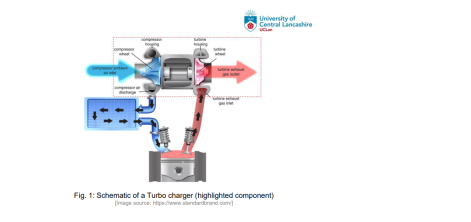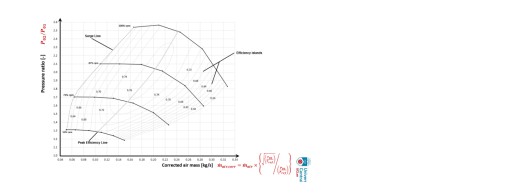MP3395 Structured and informed design and development of engineering systems: Turbocharger Performance Evaluation and System Analysis CW2 Assignment
| Category | Assignment | Subject | Management |
|---|---|---|---|
| University | Module Title | MP3395 Turbocharger Performance Evaluation and System Analysis CW2 |
MODULE LEARNING OUTCOMES
This assignment is structured that students show evidence for partial fulfilment of the following module learning outcomes:
[LO1] Structured and informed design and development of engineering systems through the application of scientific principles and methodology to a variety of systems
[LO2] Apply mathematical and engineering principles as either a part or the whole of the analysis and evaluation of the performance of a variety of engineering systems and processes quantifying the limitations of the modelling
[LO3] Apply a systems approach to engineering problems to classify, analyse and evaluate the performance of systems and components through the use of modelling techniques
Background/Introduction
Turbochargers (Fig. 1) are integral to modern engineering, enhancing engine power and efficiency by increasing the density of intake air to allow for greater fuel combustion. In addressing contemporary challenges, turbochargers contribute to reducing emissions and improving fuel efficiency, aligning with global environmental standards across automotive, marine, and power generation applications.
This coursework enables students to apply scientific principles and structured design methods to analyse turbocharged systems [LO1]. By utilising T-s diagrams, turbocharger compressor maps, analytical (0D and/or 1D models) students/learners will apply mathematical and engineering principles to evaluate key performance parameters, such as efficiency, airflow, and pressure ratios, while understanding the limitations of modelling in real-world applications [LO2]. A systems-based approach will be used to classify and evaluate the turbocharger’s performance characteristics, leveraging models to understand operational boundaries like surge and choke [LO3]. This foundational understanding prepares students to design and evaluate turbocharged systems effectively, integrating both theoretical and practical knowledge for contemporary engineering challenges.
Schematic of a Turbo charger (highlighted component)

Tasks
A testbench data from a manufacturer produced the compressor map in Fig. 2. The turbocharger has a maximum speed of 15,000 rpm. One set of the tests that produced the map was at 50%, 71%, 87% and 100% of the maximum speeds at varied compressor isentropic efficiency (𝜂∞,𝑐) in the range 50% < 𝜂∞,𝑐 < 100%. Your main goal is to evaluate the performance of the turbocharger over a range of operations. These data should allow you to carry out a set of analyses in a parametric manner to discuss the performance of the turbocharger. You will be expected to make (but state clearly with justifications) reasonable assumptions in your analyses. Use the gas properties in Table 1 in your analyses.
| Turbine | Compressor | |
| Specific heats at constant pressure, 𝑐𝑝 | 1.005 𝑘𝐽/𝑘𝑔𝐾 | 1.150 𝑘𝐽/𝑘𝑔𝐾 |
| Polytropic indices, γ | 1.41 | 1.35 |
Table 1: Gas cycle properties
As part of your tasks, you will be expected to do a limited critical review of literature to support your analyses as part of your technical report. The format/structure for the report is given in Appendix.

Fig. 2: Compressor map
Indicative Report Tasks4 and expected report layout. Use the provided Coursework Template.
APPENDICES TO THIS BRIEF
APPENDIX CW 1B: Degree Apprenticeship Learning Outcomes
[K] Incropera
APPENDIX CW 1A: Referencing style
[1] Incropera FP, Lavine AS, Bergman TL, DeWitt DP. Fundamentals of heat and mass transfer. Wiley; 2007.
[2] Peles Y, Koşar A, Mishra C, Kuo CJ, Schneider B. Forced convective heat transfer across a pin fin micro heat sink. International Journal of Heat and Mass Transfer. 2005 Aug 1;48(17):3615-27.
[3] Tigges KD, Klauke F, Bergins C, Busekrus K, Niesbach J, Ehmann M, Kuhr C, Hoffmeister F, Vollmer B, Buddenberg T, Wu S. Conversion of existing coal-fired power plants to oxyfuel combustion: Case study with experimental results and CFD-simulations. Energy Procedia. 2009 Feb 1;1(1):549-56.
[4] Yu JC, Li ZX, Zhao TS. An analytical study of pulsating laminar heat convection in a circular tube with constant heat flux. International journal of heat and mass transfer. 2004 Nov 1;47(24):5297-301.
[5] Tancrez M, Galindo J, Guardiola C, Fajardo P, Varnier OL. Turbine adapted maps for turbocharger engine matching. Experimental thermal and fluid science. 2011 Jan 1;35(1):146-53.
[6] Moraal P, Kolmanovsky I. Turbocharger modeling for automotive control applications. SAE Technical Paper;